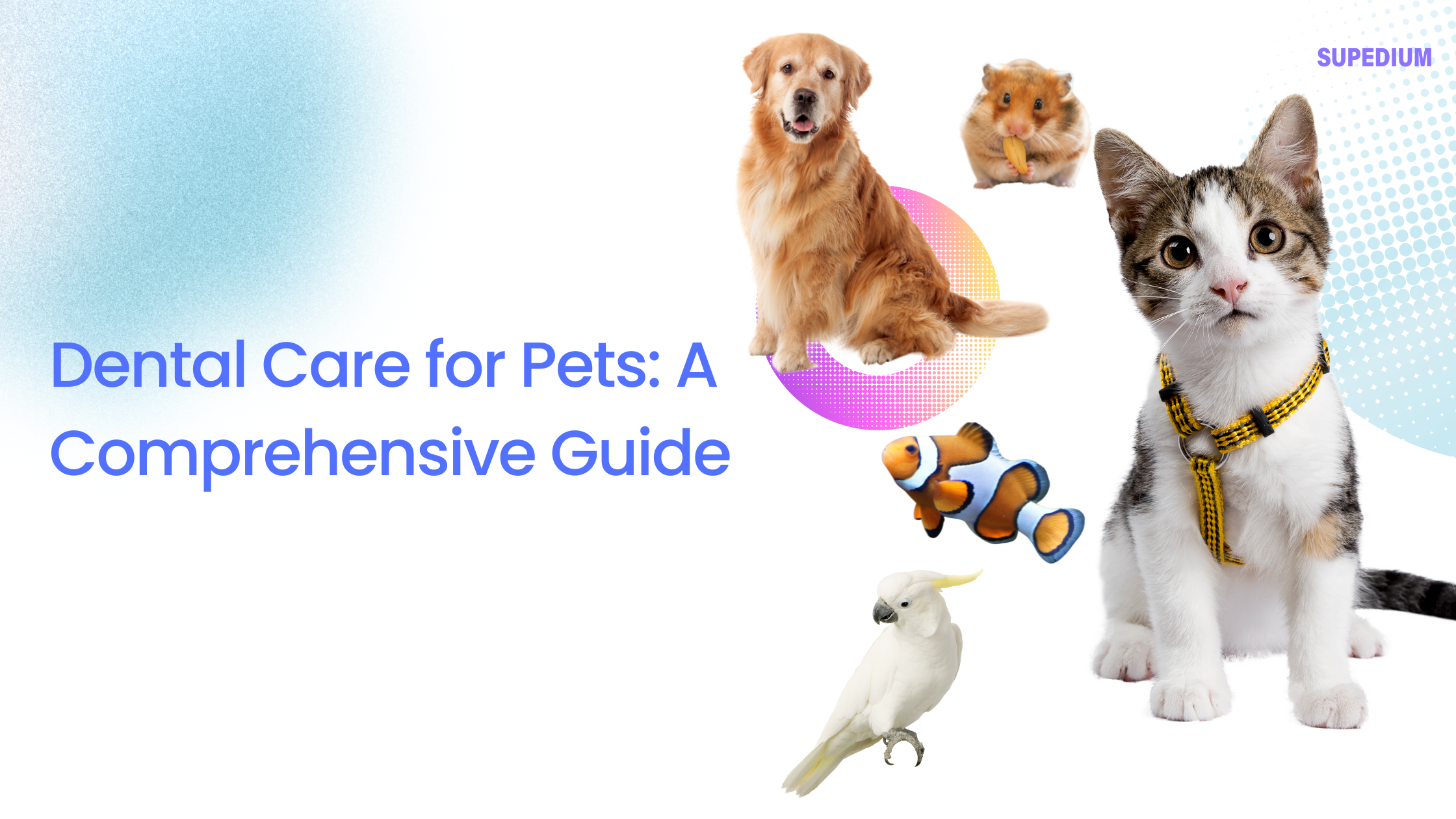Table of Contents
![]()
Introduction
Maintaining good dental health is crucial for pets, just as it is for humans. Poor dental hygiene in pets can lead to a range of serious health issues, affecting their overall well-being. Regular dental care helps prevent conditions such as plaque and tartar buildup, gum disease, tooth decay, and tooth loss. Understanding how to care for your pet’s teeth and recognizing dental problems early can make a significant difference in their quality of life.
Anatomy of a Pet’s Mouth
To effectively care for your pet’s dental health, it’s helpful to understand the basic anatomy of their mouth. Pets have a variety of teeth suited to their dietary needs.
Structure of the Teeth
Pets, including cats and dogs, have incisors, canines, premolars, and molars. Incisors are used for nibbling and grooming, canines are pointed teeth for tearing, premolars are designed for shearing food, and molars grind food down. The arrangement and type of teeth can vary between species. For example, cats have fewer molars compared to dogs, reflecting their different dietary needs.
Gums and Oral Tissues
Healthy gums are typically pink and firm. Signs of dental problems include red, swollen, or bleeding gums. Monitoring the condition of your pet’s gums can help identify issues before they become severe.
Common Dental Problems in Pets
Several dental issues are prevalent among pets, and recognizing these problems early can prevent further complications.
Plaque and Tartar Buildup
Plaque, a soft, sticky film of bacteria, can harden into tartar if not removed regularly. Tartar buildup can lead to gum disease and other dental issues. It often appears as a yellow or brownish substance on the teeth.
Gingivitis
Gingivitis is the inflammation of the gums caused by plaque accumulation. Early signs include red or swollen gums and bad breath. If untreated, gingivitis can progress to more severe periodontal disease.
Periodontal Disease
Periodontal disease affects the structures surrounding the teeth, including the gums and bone. It progresses from gingivitis to a more serious condition where the gums pull away from the teeth, forming pockets that become infected. This can lead to tooth loss and systemic health issues if not addressed.
Tooth Resorption in Cats
Tooth resorption is a condition where a pet’s tooth structure breaks down and is absorbed back into the body. It is particularly common in cats and can cause significant pain and discomfort. Treatment often requires veterinary intervention.
Broken or Loose Teeth
Teeth can become broken or loose due to trauma or chewing on hard objects. Broken teeth should be examined by a vet as they can cause pain and may lead to infection.
Preventive Dental Care
Prevention is key to maintaining your pet’s dental health. Several strategies can help keep your pet’s teeth clean and healthy.
Regular Brushing
Brushing your pet’s teeth is one of the most effective ways to prevent plaque buildup. Use a toothbrush and toothpaste specifically designed for pets. Aim to brush your pet’s teeth daily, or at least a few times a week. Begin with short, positive sessions to help your pet get used to the process.
Dental Chews and Toys
Dental chews and toys can help reduce plaque and tartar through mechanical action. Choose products specifically designed for dental health, and supervise your pet to ensure they use them safely.
Diet and Nutrition
Diet plays a significant role in dental health. Certain commercial pet foods and treats are formulated to reduce plaque and tartar. Consult with your vet to determine the best diet for your pet’s dental health.
Professional Cleanings
Regular veterinary dental cleanings are essential for thorough oral care. Professional cleanings involve scaling and polishing to remove plaque and tartar that brushing alone cannot address. Your vet will also check for signs of dental disease and provide treatments if necessary.
Recognizing Dental Issues
Being aware of the signs of dental problems can help you seek timely veterinary care.
Behavioral Signs
Changes in eating habits, such as reluctance to chew or eating more slowly, can indicate dental pain. Bad breath and excessive drooling are also common signs of dental issues.
Physical Signs
Look for red or swollen gums, discolored or broken teeth, and difficulty chewing or yawning. These physical signs can help you identify dental problems early.
Dental Care Products
Several products can aid in maintaining your pet’s dental health.
Toothbrushes and Toothpaste
Pet-specific toothbrushes and toothpastes are designed to be safe and effective for cleaning your pet’s teeth. Never use human toothpaste, as it can be harmful to pets.
Dental Sprays and Wipes
Dental sprays and wipes can help reduce plaque and freshen your pet’s breath. They are not a substitute for brushing but can be useful as an adjunct to regular dental care.
Water Additives
Water additives can help reduce plaque and tartar by adding enzymes to your pet’s drinking water. These additives are an easy way to support dental health but should be used in conjunction with other dental care practices.
Professional Veterinary Care
Regular veterinary visits are crucial for maintaining your pet’s dental health.
When to Consult a Vet
If you notice signs of dental issues or if your pet shows discomfort, it’s important to consult a vet. Regular dental check-ups can help identify and address problems early.
Dental Procedures
Veterinary dental procedures may include cleaning and scaling, extractions, or other treatments. Your vet will provide guidance on the best course of action based on your pet’s needs.
Post-Procedure Care
After a dental procedure, follow your vet’s instructions for care. This may include monitoring for any signs of complications and providing appropriate pain management.
Special Considerations
Certain pets require additional dental care considerations.
Dental Care for Senior Pets
Senior pets are more prone to dental issues due to age-related changes. Regular dental exams and adjustments to care routines can help manage these issues effectively.
Dental Care for Pets with Special Needs
Pets with underlying health conditions may require customized dental care plans. Consult with your vet to create a plan that addresses your pet’s specific needs.
Owner’s Role and Education
As a pet owner, your involvement in dental care is crucial.
Training and Consistency
Establishing a consistent dental care routine and training all family members to participate can help ensure your pet receives the best care.
Resources for Further Learning
Consult with your veterinarian for personalized advice, and explore additional resources such as books, websites, and support groups to expand your knowledge of pet dental care.
Conclusion
Maintaining good dental health is vital for your pet’s overall well-being. By implementing regular brushing, using appropriate dental products, and seeking professional care when needed, you can help prevent dental problems and ensure a healthier, happier life for your pet. Remember, proactive dental care is key to avoiding serious health issues and enhancing your pet’s quality of life.
Share This





Be the first to comment